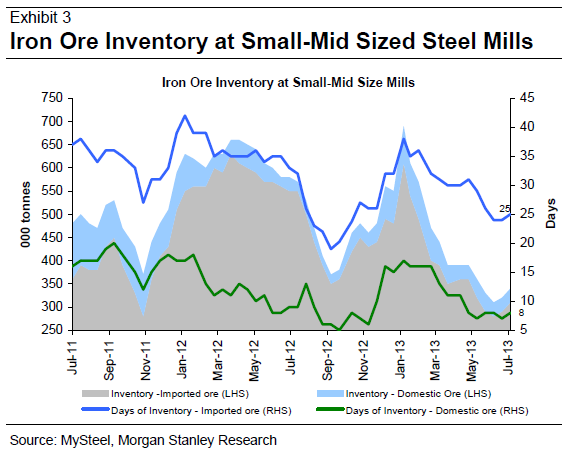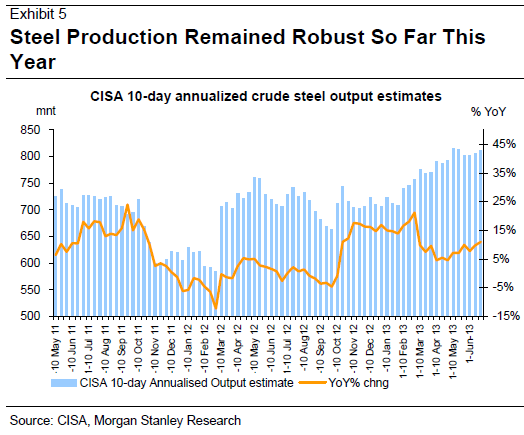There’s an ongoing debate among iron ore analyts about how deep will be any seasonal Q3 iron ore price fall. On the one hand Credit Suisse is very bearish and on the other hand Macquarie Bank is sanguine, with others scattered across the continuum in between. The difference of opinion relies upon a number of factors but the bulls basically maintain that dramatically reduced Chinese iron ore stocks will be enough to prevent a repeat of last year’s big inventory run down.
A couple of charts from Morgan Stanley today add clarity. First, here is the state of iron ore inventories at steel mills:

A similar pattern is obvious in port stocks. Days of inventory for iron ore at mills are much lower than one year ago. So, that’s a slam dunk, right?
Not so fast. All of those iron ore stocks that were run down last year and were replenished in the new year restock actually built up an enormous steel inventory and the truth is the Chinese economy has simply not been able to work it off since, which is why Chinese steel prices have remained under pressure:

One reason why is that steel mills continue to pump out material despite low margins, presumably in a gambit to survive:

The question this year for the iron ore seasonal slow down is not so much where do iron ore inventories sit but where so steel inventories sit and how will this excess inventory be worked off? The Q3 seasonal wind down could still see a significant draw down of existing stocks, only this time focused in finished steel, especially if underlying economic conditions also slow, which is likely.
This will knock on to demand for iron ore either in a deeper price retracement or in a shallower recovery in Q4.

